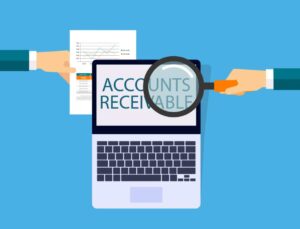Digital assets: meaning, opportunities, challenges, and more

In today’s digital age, the concept of assets has expanded beyond traditional physical assets to include digital assets. Digital assets are intangible assets that have value and can be owned and traded just like physical assets. Digital assets come in various forms such as digital art, music, videos, domain names, and even social media accounts. The rise of digital assets has opened up new opportunities for businesses and individuals to create, own, and monetize their digital content.
What are digital assets?
Digital assets are intangible assets that can be owned, stored, and transferred digitally. They are becoming increasingly prevalent in today’s digital world and include a wide range of assets such as digital art, music, videos, domain names, software, and even social media accounts.
The most common types of digital assets are media assets such as images, videos, and music. These assets are used for a wide range of purposes, including marketing and advertising, content creation, and social media campaigns. Other types of digital assets include virtual currency, such as Bitcoin, and digital tokens, such as Ethereum.
One of the key characteristics of digital assets is that they are easily transferable and can be traded on digital platforms. This has opened up new opportunities for individuals and businesses to monetize their digital content. For example, digital art can be sold as a non-fungible token (NFT), which allows artists to sell their work directly to collectors without the need for intermediaries.
How digital assets are changing the business landscape
Digital assets have transformed the way businesses operate, particularly in the areas of marketing, advertising, and e-commerce. Companies can now use digital assets to create more personalized and targeted marketing campaigns, which can lead to increased engagement and conversions.
For example, companies can use customer data to create personalized product recommendations, email campaigns, and social media ads. This allows businesses to provide a more tailored experience for their customers, which can lead to higher customer satisfaction and loyalty.
Digital assets have also created new opportunities for e-commerce businesses. Companies can now sell digital products, such as software, e-books, and digital courses, directly to customers. This has opened up new revenue streams for businesses, as they no longer need to rely solely on physical products.
Also, digital assets have enabled the growth of the gig economy, where individuals can monetize their skills and expertise through digital platforms. Freelancers can offer their services online, and businesses can hire talent from all over the world without the need for physical offices.
However, the rise of digital assets has also created new challenges for businesses, particularly around the management and protection of digital assets. As digital assets can be easily duplicated and distributed, it is important for businesses to implement robust security measures to protect their digital assets from theft and unauthorized use.
Businesses need to ensure that they have the legal rights to use and distribute digital assets, particularly when it comes to intellectual property rights. Failure to do so can result in legal action and damage to the company’s reputation.
The importance of proper management of digital assets
Proper management of digital assets is crucial to ensure their security, longevity, and value. Businesses need to implement effective strategies and tools to manage their digital assets, from creation to distribution and beyond. Here are some key reasons why proper management of digital assets is important:
- Protection: Digital assets can be easily stolen, duplicated, and distributed without permission. Proper management of digital assets includes implementing robust security measures, such as encryption, access controls, and monitoring, to protect them from unauthorized use and theft.
- Organization: As the volume of digital assets grows, it can become difficult to manage and find specific assets when needed. Proper management of digital assets includes organizing them in a logical and intuitive way, using metadata and tagging, to make them easy to find and use.
- Collaboration: In many businesses, multiple teams and stakeholders are involved in the creation and management of digital assets. Proper management of digital assets includes facilitating collaboration and workflow management, to ensure that everyone has access to the right assets at the right time.
- Compliance: Digital assets may be subject to legal and regulatory requirements, such as copyright laws, data privacy regulations, and industry standards. Proper management of digital assets includes ensuring compliance with these requirements, to avoid legal and reputational risks.
Monetizing digital assets: opportunities and challenges
Monetizing digital assets is becoming increasingly popular, as individuals and businesses look for new ways to generate revenue from their digital content. Here are some of the opportunities and challenges of monetizing digital assets:
Opportunities
- New revenue streams: Monetizing digital assets can create new revenue streams for businesses, particularly in industries such as media, entertainment, and e-commerce.
- Direct-to-consumer: Monetizing digital assets allows businesses to sell their products and services directly to consumers, without the need for intermediaries such as distributors and retailers.
- Global reach: Digital assets can be distributed globally, allowing businesses to reach new markets and customers.
- Flexibility: Monetizing digital assets allows businesses to experiment with new pricing models and business models, such as subscription services and pay-per-use.
Challenges
- Intellectual property: Monetizing digital assets can raise complex intellectual property issues, particularly around copyright, trademarks, and patents.
- Pricing: Determining the right price for digital assets can be challenging, particularly as digital content can be easily duplicated and distributed.
- Competition: The ease of creating and distributing digital assets means that there is often a high level of competition, which can make it difficult to stand out in the market
- Technology: Monetizing digital assets often requires specialized technology and platforms, which can be expensive and time-consuming to develop and maintain.
Conclusion
Digital assets are becoming an increasingly important part of our lives as we continue to rely on digital technology. As more businesses and individuals create digital content, the value of digital assets will only continue to grow. It is important for individuals and businesses to understand the concept of digital assets and how they can be used to create value.
Proper management of digital assets is crucial to ensure their security and longevity. As the digital landscape continues to evolve, it is essential to stay informed and adapt to the changes in order to make the most of digital assets.
Don't miss a thing. Follow us on Telegram and Follow us on WhatsApp. If you love videos then also Subscribe to our YouTube Channel. We are on Twitter as MakeMoneyDotNG.





